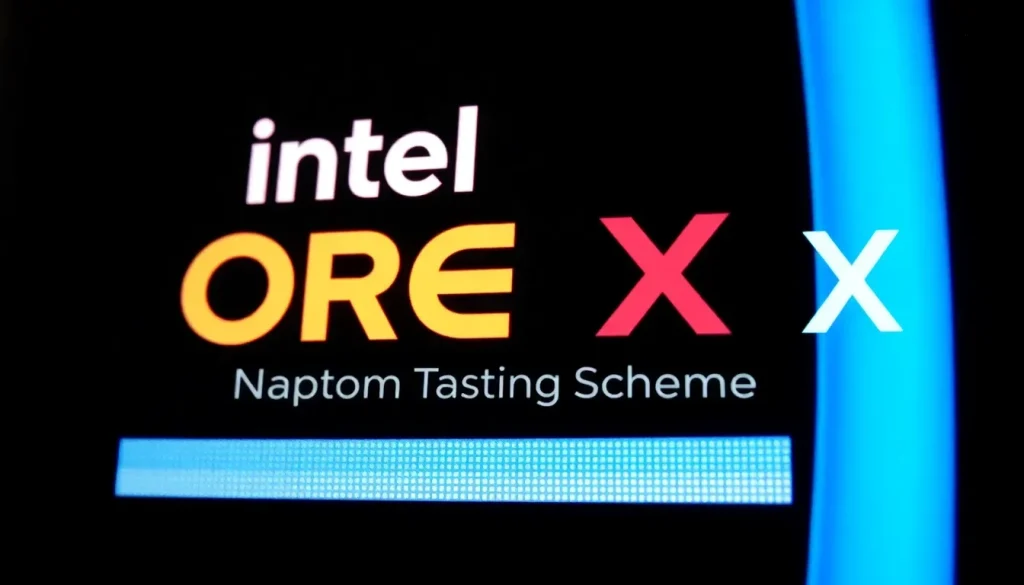Understanding the Intel Core Ultra X Naming Scheme Confusion

In the rapidly evolving world of computing technology, naming conventions can sometimes create confusion among consumers and enthusiasts alike. Intel's recent announcements regarding their upcoming Core Ultra processors have sparked discussions and debates, particularly around the new naming scheme. Understanding these changes is crucial for anyone looking to upgrade or build a new system. Let’s delve into the intricacies of the Intel Core Ultra naming scheme and what it means for consumers.
- Understanding Intel Core Ultra
- What is the Intel Core Ultra 5?
- Is Intel Core Ultra ARM-based?
- Performance in Gaming: Is Intel Core Ultra 7 good for gaming?
- Comparing Intel Core Ultra 5, 7, and 9
- What generation is Intel Core Ultra?
- Decoding the Intel Core Ultra naming scheme
- What is the Intel Core Ultra architecture name?
- Core Ultra chip variants and their implications
Understanding Intel Core Ultra
The Intel Core Ultra series represents a significant shift in Intel's approach to its processor lineup. Focusing on performance and efficiency, these new chips are designed to cater to the demands of modern computing, particularly in gaming and content creation. The Core Ultra series is expected to leverage advanced architecture and innovative technologies to deliver superior performance.
Intel aims to enhance user experience by offering a range of processors that suit various needs and budgets. This new series includes not just improvements in core count and clock speeds, but also enhancements in integrated graphics, which are becoming increasingly important in today's computing landscape.
What is the Intel Core Ultra 5?
The Intel Core Ultra 5 is positioned as a mid-range option within the Core Ultra lineup. Recent leaks indicate that it will feature 10 Xe3 GPU cores, which is a reduction from the 12 cores found in the higher-end X7 and X9 models. This reduction in core count does not necessarily equate to inferior performance; rather, it suggests a tailored approach aimed at balancing performance and power consumption.
This processor is expected to cater to users who require solid performance without delving into the higher price brackets of the X7 or X9 options. Its capabilities make it suitable for gaming at moderate settings and for everyday productivity tasks.
Is Intel Core Ultra ARM-based?
No, the Intel Core Ultra series is not ARM-based. Intel continues to utilize its x86 architecture for this lineup. This choice allows Intel to maintain compatibility with a vast array of software applications and games that have been optimized for x86 processors over the years.
While ARM architecture has gained popularity, particularly in mobile devices, Intel's decision to stick with x86 ensures that users can expect high performance in traditional computing tasks, making it a suitable choice for both gamers and professionals alike.
Performance in Gaming: Is Intel Core Ultra 7 good for gaming?
The Intel Core Ultra 7 is shaping up to be a robust option for gamers. With a higher core count and advanced GPU capabilities, it is designed to handle modern gaming demands effectively. Users can expect enhanced frame rates and overall smoother gameplay, even in graphically intensive titles.
Key aspects that make the Core Ultra 7 a compelling choice for gamers include:
- Higher core counts for better multi-threading performance.
- Improved integrated graphics with Xe3 cores.
- Enhanced thermal management for sustained performance during long gaming sessions.
Comparing Intel Core Ultra 5, 7, and 9
When considering the Intel Core Ultra series, it's essential to compare the various options available. Here’s a brief overview of the differences between the Core Ultra 5, 7, and 9:
| Model | GPU Cores | Target Audience |
|---|---|---|
| Core Ultra 5 | 10 Xe3 | Casual gamers and productivity users |
| Core Ultra 7 | 12 Xe3 | Enthusiasts and serious gamers |
| Core Ultra 9 | 16 Xe3 | High-end gaming and professional workloads |
What generation is Intel Core Ultra?
The Intel Core Ultra series is part of the next generation of Intel processors, building upon the advancements made in previous generations. This new series is referred to as the 'Panther Lake' generation, which promises to deliver significant improvements in both performance and efficiency compared to its predecessors.
Decoding the Intel Core Ultra naming scheme
One of the most discussed aspects of the Core Ultra series is its naming scheme. Initially, there was confusion regarding how the processors would be categorized. Reports indicated that the naming convention would include an 'X' designation, which would denote models equipped with integrated graphics processing capabilities.
Interestingly, it has been suggested that the 'X' designation will come after the model number. For example, the Core Ultra 9 would be labeled as 'Core Ultra 9 X388H.' This could potentially add to the existing confusion around Intel's naming conventions, as many users are already accustomed to previous schemes.
What is the Intel Core Ultra architecture name?
The architecture name for the Intel Core Ultra series is based on the advanced 'Panther Lake' framework. This represents a step forward in design, focusing on high efficiency and better performance metrics. The Panther Lake architecture is said to include enhancements that will allow for greater power efficiency, improved thermal management, and higher computational capabilities.
Core Ultra chip variants and their implications
With the introduction of the Core Ultra line, Intel is diversifying its offerings. The potential existence of regular Core Ultra 5, 7, and 9 models with a different suffix (3X5H) suggests that there may be additional options with varying core counts—specifically, four Xe3 cores in these standard variants.
This segmentation within the Core Ultra lineup indicates Intel’s strategy to appeal to a broader audience, from casual users to hardcore gamers. As users continue to seek versatile processors for various tasks, this strategic move aligns well with market needs.
As we await further confirmation on these details, it is clear that Intel is positioning itself to compete more aggressively in the CPU market, particularly against AMD's Ryzen series. With the anticipated performance of the Panther Lake chips, Intel hopes to reclaim ground in both the desktop and mobile processor arenas.
For those looking to dive deeper into the topic of Intel's naming schemes and processors, you may find this video insightful:
As more information becomes available regarding the launch of these processors, tech enthusiasts and gamers alike will be eager to see how these changes impact their purchasing decisions. The landscape for PC hardware is evolving, and staying informed will be key to making the best choices for future builds.




Leave a Reply